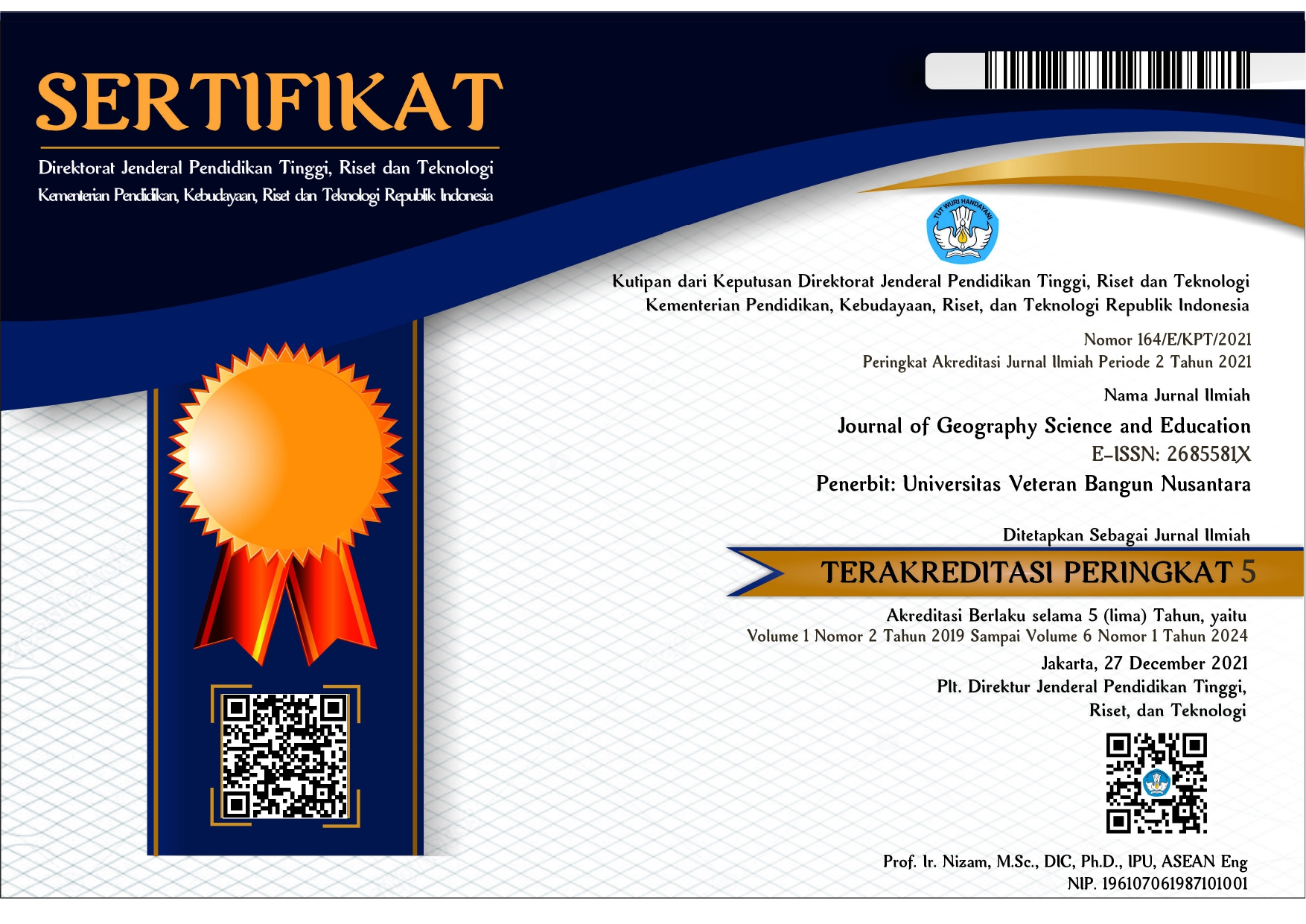Application of Blended Learning Methods in Increasing High School Students' Learning Interest in Sukoharjo
DOI:
https://doi.org/10.32585/jgse.v3i2.2077Keywords:
Blended Learning Methods, Learning InterestsAbstract
The Covid-19 pandemic caused a change in the education system that began from face-to-face meetings in the classroom to online-based to reduce the spread of the covid-19 virus. During online learning this causes the interest in learning learners decrease and there are several obstacles, namely: facilities, facilities, and infrastructure that are less supportive in teaching and learning activities, in addition to the lack of teaching methods carried out by educators in learning activities. This research uses descriptive research methods with quantitative approaches as well as primary data collection techniques from tests (questionnaires) and observation of online and offline learning activities in the classroom. Sma Negeri 1 Tawangsari has implemented a learning system offline and online. So that the application of blended learing learning methods is considered suitable in this system. Supported by the results of research shown in the second cycle that showed that offline learning activities are more desirable to learners because of the interaction between teachers and participants who are able to improve memory, reduce smartphone use that causes negative impacts on health, and short assignments with long-term collection.Downloads
References
Almanshur Fauzan, Ghony Djinaadi, M, Metoded Penelitian Kualitatif, Jogjakarta : Ar-Ruzz Media, 2016
Bruce Joyce, Marsha Weil, Emily Calhoun. 1998. Model of Teaching. Yogyakarta: Pustaka Pelajar
Graham, C. R. (2004). Blended Learning Systems: Definition, Current Trends, and Future Directions.
Husamah. (2014). Pembelajaran Bauran, Blended Learning. Jakarta: Prestasi Pustaka Publisher.
Ishak, Abdulhak. Deni dermawan. 2013. Teknologi Pendidikan. Bandung : PT Roda Kaya
Lalima, K. L. (2017). "Blended Learning : An Inovative Approach" . Universal Journal Of Educational Reserch.
Moelong. (2007). Metodologi Penelitian Kualitatif. Bandung: PT. Remaja Rosdakarya Offset.
Prof.DR.Sugiyono. (1999). Metode Penelitian Tindakan (Action Research). Retrieved from Universitas Negeri Padang Repository: http://repository.unp.ac.id/1621/1/MANSURDIN_4013_99.pdf
Rachmana, A., Sukrawan, Y., & Rohendi, d. (2019). Penerapan Model Blended Learning Dalam Peningkatan Hasil Belajar Menggambar Objek 2 Dimensi. Journal of Mechanical Engineering Education, Vol. 6, No, 2, hlm. 145-152
Rully, I., & Poppy, Y. (2017). Metodologi Penelitian Kuantitatif, Kualitatif dan Campuran untuk Manajemen, Pembangunan, dan Pendidikan. Bandung: Raja Grafindo Perkasa
Sagala, S. (2006). Konsep dan Makna Pembelajaran . Bandung: Alfabeta.
Sugiyono, P.D. (2017). Metode Penelitian Kuantitatif, Kualitatif, dan R&D. Bandung: Alfabeta
Utomo, S. W., & Wihartanti, L. V. (2019). Penerapan Strategi Blended Learning Untuk Meningkatkan Kemampuan Berpikir Kritis Mahasiswa Pada Era Revolusi Industri 4.0. Jurnal Teknologi Pendidikan, 30-44
Widiara, I. (2018). Blended Learning Sebagai Alternatif Pembelajaran Di Era Digital. Purwadita, 50-56
Downloads
Published
How to Cite
Issue
Section
License
Authors who publish with the Journal of Geography Science and Education agree to the following terms:
- Authors retain copyright and grant the journal the right of first publication with the work simultaneously licensed under a Creative Commons Attribution License (CC BY-SA 4.0) that allows others to share the work with an acknowledgment of the work's authorship and initial publication in this journal.
- Authors are able to enter into separate, additional contractual arrangements for the non-exclusive distribution of the journal's published version of the work (e.g., post it to an institutional repository or publish it in a book), with an acknowledgment of its initial publication in this journal.
- Authors are permitted and encouraged to post their work online (e.g., in institutional repositories or on their website) prior to and during the submission process, as it can lead to productive exchanges, as well as earlier and greater citation of published work.










